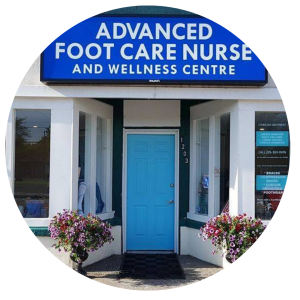
Corns and calluses are hard, painful areas of skin that often develop on the feet in response to pressure or friction.
They happen when the skin tries to protect an underlying area from injury, pressure, or rubbing.
They are more common among people who wear ill-fitting shoes, who wear no socks, have sweaty feet, and those who stand for long periods each day.
They come with the presence of foot and toe deformalities, there is almost always presence of a callus or corn if not offloaded properly. People with certain deformities of the foot, such as hammer toes, overlapping toes, and bunions are prone.
They occur from have excessive pressure on feet from weight or high heels
They affect women more than men.
They can feel like your walking on a stone.
Facts about corns and calluses
Corns have a distinct, often hard, center, which may be surrounded by inflamed skin.
Corns can be painful when pressed, but calluses are not usually painful.
Calluses are usually larger than corns, and they vary in shape, while corns tend to be smaller, round and well-defined.
Lifestyle and clothing changes can help prevent corns and calluses.
Corns and calluses are not contagious but may become painful if they get too thick. In people with diabetes or decreased circulation, they can lead to more serious foot problems.
If a corn or callus becomes very inflamed or painful, the patient should seek medical advice.
Patients with poor circulation, fragile skin, or nerve problems and numbness in the feet should talk to their doctors before treating corns and calluses at home.
People with diabetes, peripheral neuropathy, and peripheral arterial disease need to be particularly watchful.
Corns and calluses are not the same thing
Corns are smaller than calluses and have a hard center surrounded by inflamed skin. Corns tend to develop on the top and sides, and even between your toes, and can be painful when pressed.
Calluses are rarely painful. They usually develop on the soles of your feet, especially under the heels or balls, on your palms, or on your knees.
Why does it keep coming back?
Clients often expect after one foot care treatment that the problem has been resolved. Then they notice at the 2 week mark it starts to come back. Why? Because we need to get a long term treatment plan to address THE CAUSE. In most cases this could be offloading the area daily with padding, getting a custom orthotic made to help correct the way you walk and pressure distribution.
How does Advanced Foot Care Nurse treat calluses and corns?
The nurse will examine the feet, ask the person about their lifestyle, and they will check their footwear. A gait analysis will be performed for future comparison. A 3D image of the foot structure will also be taken.
A nurse will remove some of the hard skin that surrounds the corn so that the center of it can be removed and provide immediate relief. A callus is painlessly removed by scalpel or podiatry burr. The underlying areas are assessed for concern of ulcer prevention.
The nurse will refer the client to a physician or podiatrist when needed as part of the health team, for x-rays and further testing if required.
A client centered plan is developed to reduce the return of the corn or callus. Onsite offloading, orthopedic shoes, or custom orthotics may be the answer. We also discuss using professional UREA based creams or foams to reduce the skin build up to the area safely.
GET IN TOUCH WITH US

MONDAY: 9:00AM – 5:00PM
TUESDAY 9:00AM – 5:00PM
WEDNSDAY 9:00AM – 7:00PM
THURSDAY 9:00AM – 5:00PM
FRIDAY 9:00AM – 5:00PM
SATURDAY 9:00AM – 4:00PM
SUNDAY 10:00AM – 2:00PM
Email:
info@advancedfootnurse.com
Fax Number: (226) 216-5402
| Cookie | Duration | Description |
|---|---|---|
| cookielawinfo-checkbox-analytics | 11 months | This cookie is set by GDPR Cookie Consent plugin. The cookie is used to store the user consent for the cookies in the category "Analytics". |
| cookielawinfo-checkbox-functional | 11 months | The cookie is set by GDPR cookie consent to record the user consent for the cookies in the category "Functional". |
| cookielawinfo-checkbox-necessary | 11 months | This cookie is set by GDPR Cookie Consent plugin. The cookies is used to store the user consent for the cookies in the category "Necessary". |
| cookielawinfo-checkbox-others | 11 months | This cookie is set by GDPR Cookie Consent plugin. The cookie is used to store the user consent for the cookies in the category "Other. |
| cookielawinfo-checkbox-performance | 11 months | This cookie is set by GDPR Cookie Consent plugin. The cookie is used to store the user consent for the cookies in the category "Performance". |
| viewed_cookie_policy | 11 months | The cookie is set by the GDPR Cookie Consent plugin and is used to store whether or not user has consented to the use of cookies. It does not store any personal data. |